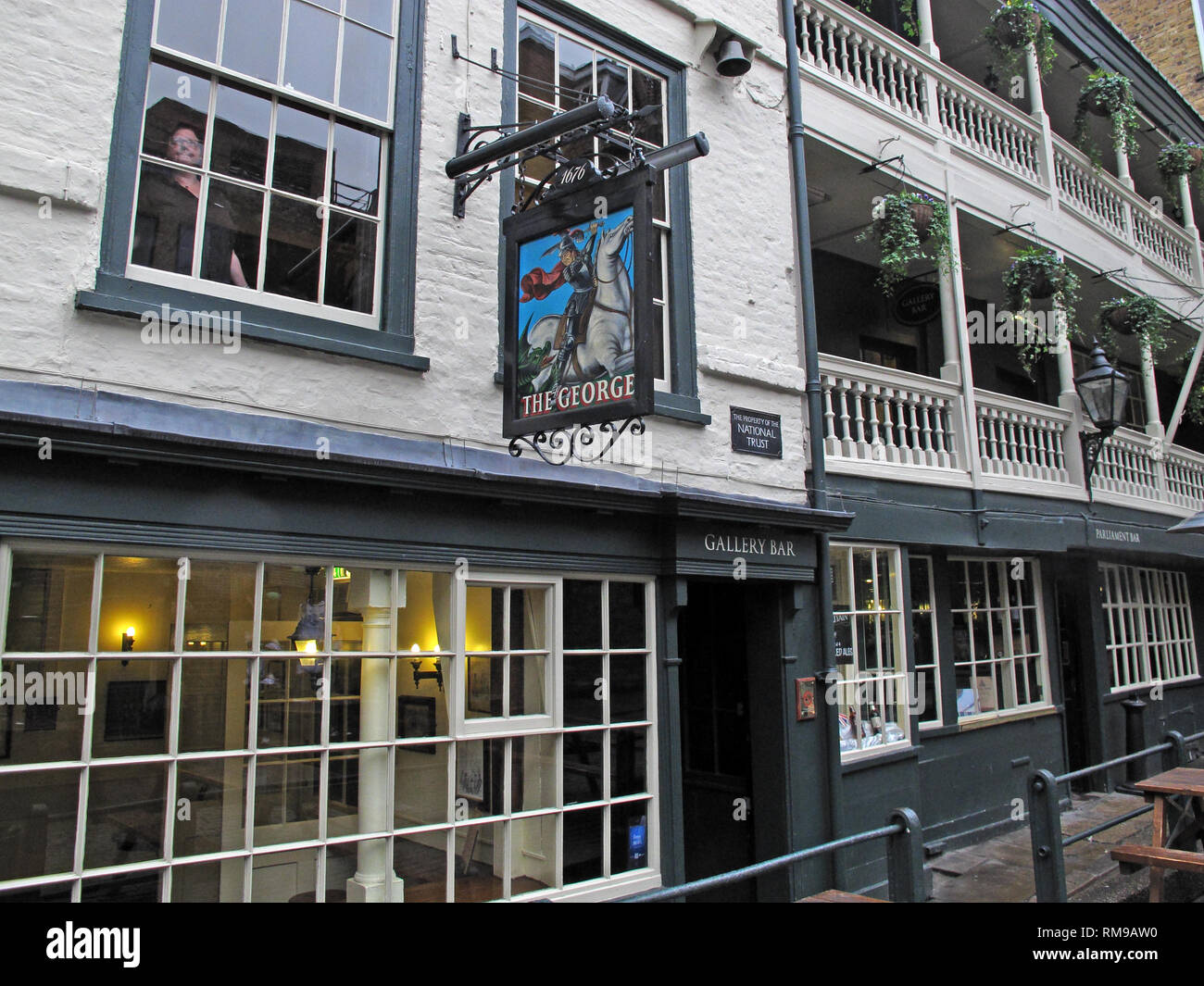The George Coaching Inn, The George Inn Yard, 77 Borough High St, London SE1 1NH

Image details
Contributor:
Tony Smith / Alamy Stock PhotoImage ID:
RM9AW0File size:
28.6 MB (1.5 MB Compressed download)Releases:
Model - no | Property - noDo I need a release?Dimensions:
3648 x 2736 px | 30.9 x 23.2 cm | 12.2 x 9.1 inches | 300dpiDate taken:
8 October 2012Location:
The George Inn Yard, 77 Borough High St, London, South East England, UK, SE1 1NHMore information:
The George or George Inn is a public house established in the medieval period on Borough High Street in Southwark, London, owned and leased by the National Trust. It is located about 250 metres (820 ft) from the south side of the River Thames near London Bridge and is the only surviving galleried London coaching inn. The first map of Southwark (Duchy of Lancaster ca1543) clearly shows it marked as 'Gorge'. It was formerly known as the George and Dragon, named after the legend of Saint George and the Dragon. There were many such inns in this part of London. Probably the most famous was The Tabard where, in 1388, Chaucer began The Canterbury Tales. In 1677 the George was rebuilt after a serious fire that destroyed most of medieval Southwark. The Tabard was also rebuilt after the same fire, but was demolished in the late nineteenth century. It is known that galleried inns were used for Elizabethan theatrical productions (Inn-yard theatre). Later, the Great Northern Railway used the George as a depot and pulled down two of its fronts to build warehousing. Now just the south face remains. The George was one of the many famous coaching inns in the days of Charles Dickens. Dickens in fact visited the George and referred to it in Little Dorrit. The building is partly . The ground floor is divided into a number of connected bars. The Parliament Bar used to be a waiting room for passengers on coaches. The Middle Bar was the Coffee Room, which was frequented by Charles Dickens. The bedrooms, now a restaurant, were upstairs in the galleried part of the building. It is one of only two coaching inns to survive in Greater London, and is the only galleried example. The White Hart is immediately to the north, and the site of The Tabard immediately to the south (now Talbot Yard). The building is Grade I listed, and is listed in CAMRA's National Inventory of Historic Pub Interiors